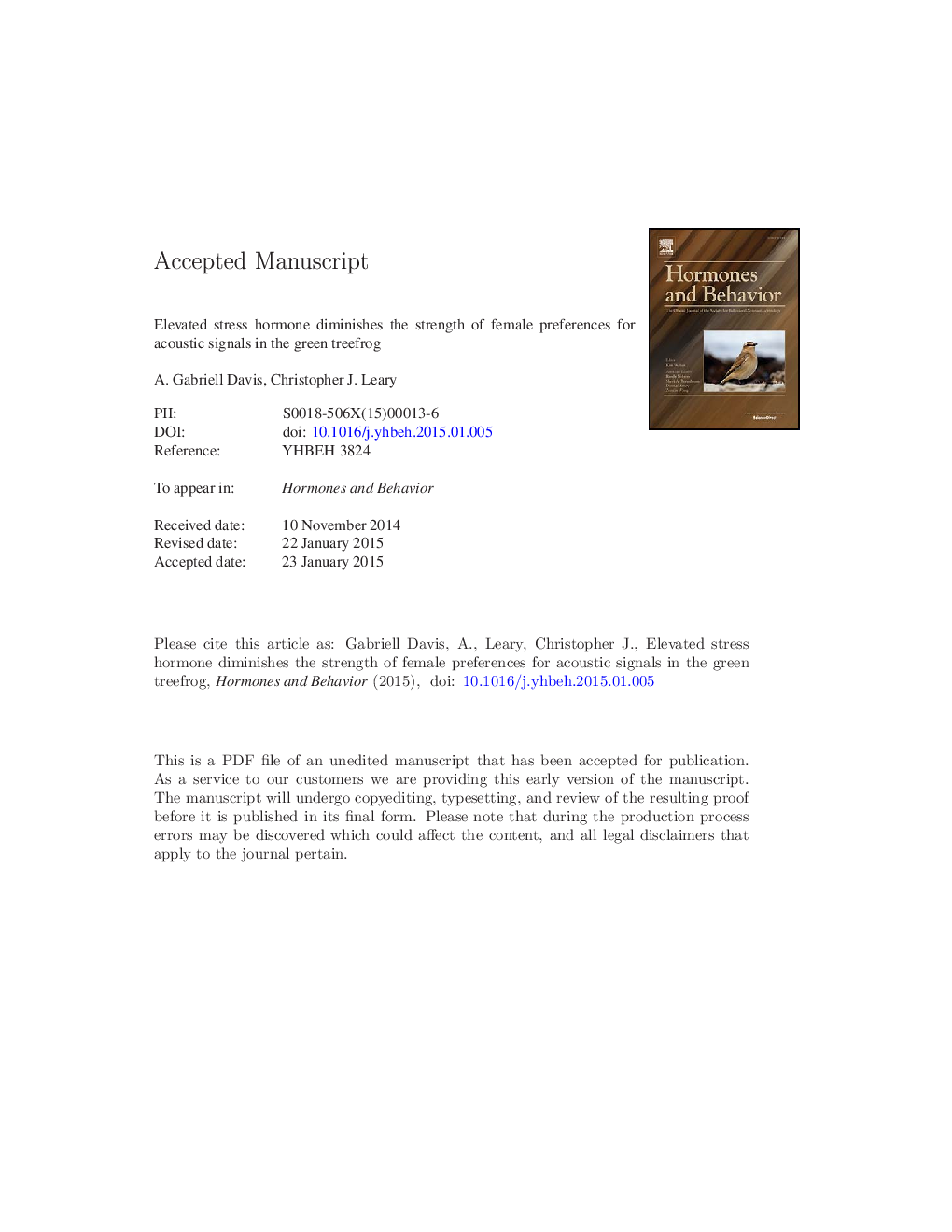| Article ID | Journal | Published Year | Pages | File Type |
|---|---|---|---|---|
| 6795164 | Hormones and Behavior | 2015 | 18 Pages |
Abstract
Mate selection can be stressful; time spent searching for mates can increase predation risk and/or decrease food consumption, resulting in elevated stress hormone levels. Both high predation risk and low food availability are often associated with increased variation in mate choice by females, but it is not clear whether stress hormone levels contribute to such variation in female behavior. We examined how the stress hormone corticosterone (CORT) affects female preferences for acoustic signals in the green treefrog, Hyla cinerea. Specifically, we assessed whether CORT administration affects female preferences for call rate - an acoustic feature that is typically under directional selection via mate choice by females in most anurans and other species that communicate using acoustic signals. Using a dual speaker playback paradigm, we show that females that were administered higher doses of CORT were less likely to choose male advertisement calls broadcast at high rates. Neither CORT dose nor level was related to the latency of female phonotactic responses, suggesting that elevated CORT does not influence the motivation to mate. Results were also not related to circulating sex steroids (i.e., progesterone, androgens or estradiol) that have traditionally been the focus of studies examining the hormonal basis for variation in female mate choice. Our results thus indicate that elevated CORT levels decrease the strength of female preferences for acoustic signals.
Related Topics
Life Sciences
Biochemistry, Genetics and Molecular Biology
Endocrinology
Authors
A. Gabriell Davis, Christopher J. Leary,
